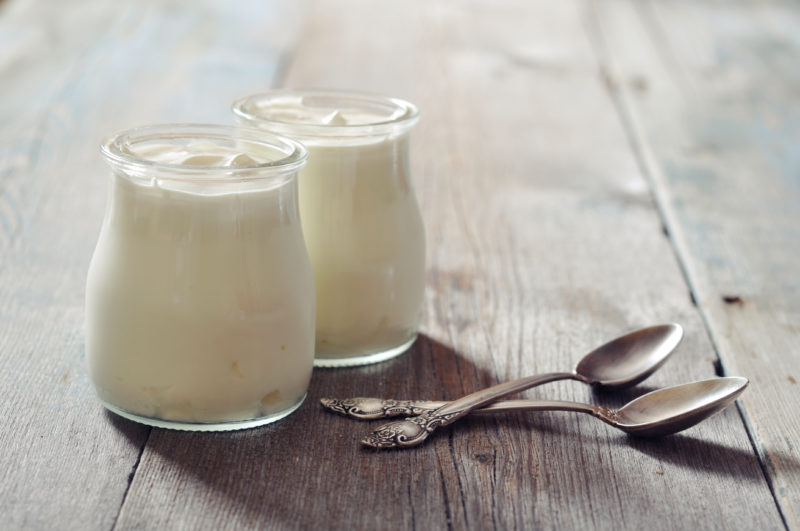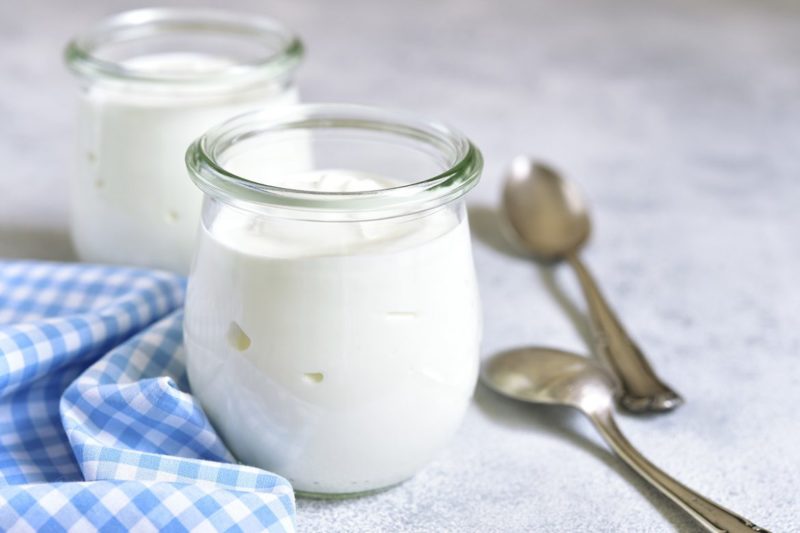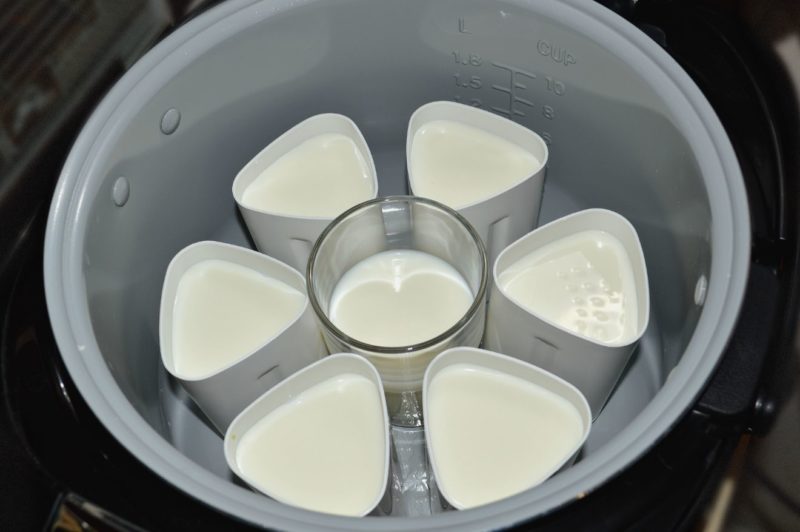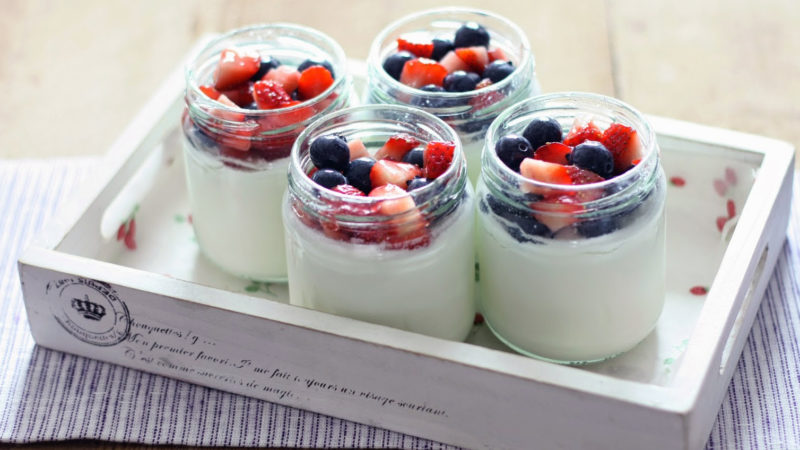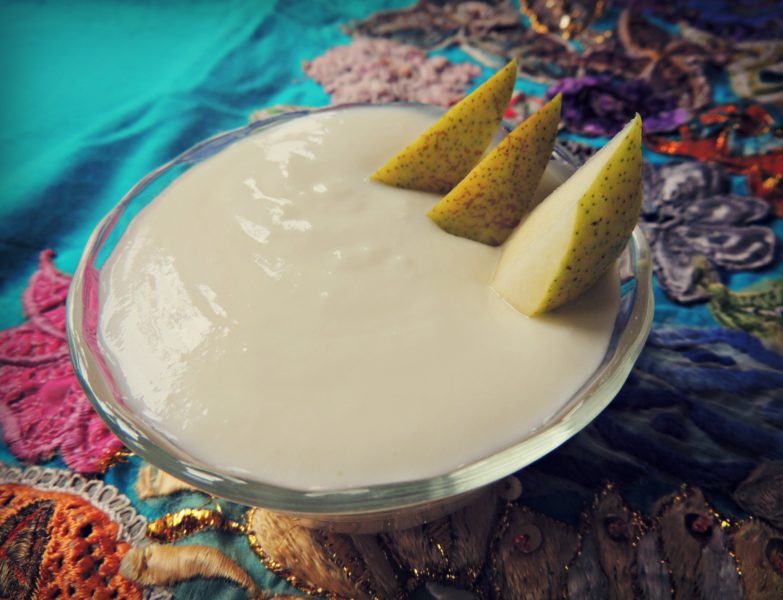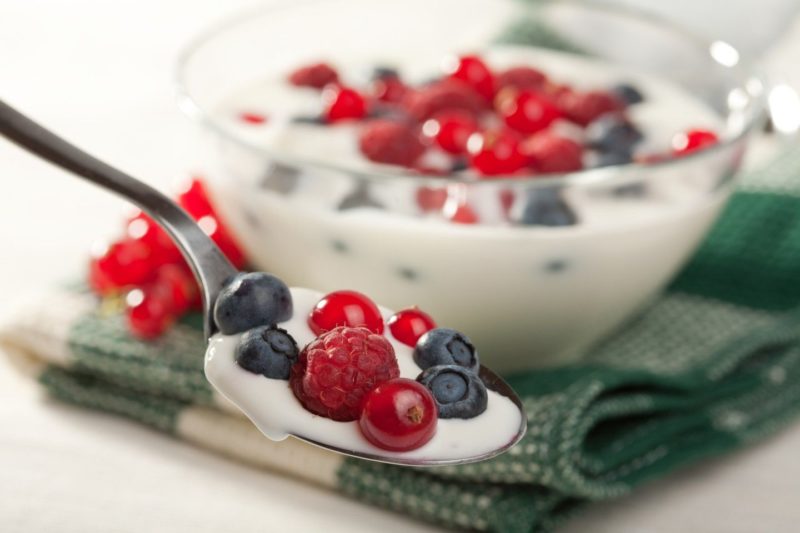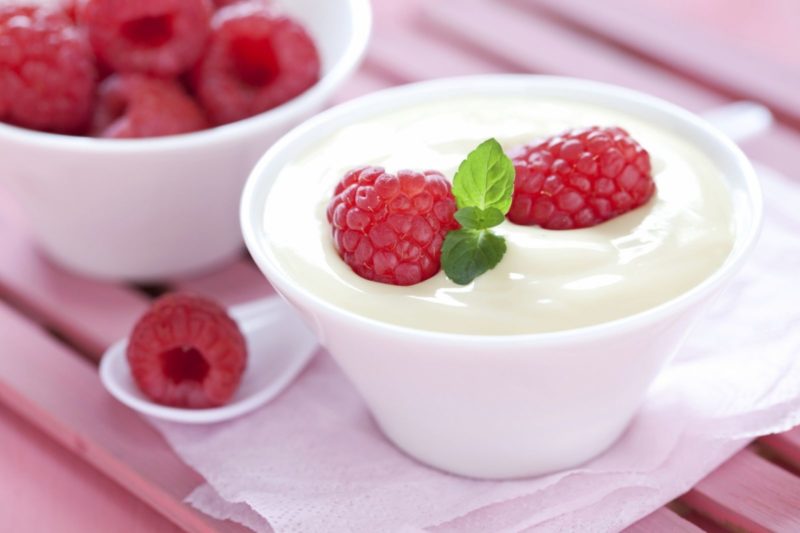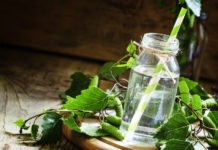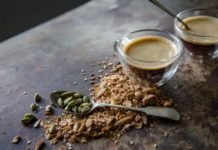More and more people tend to eat healthy and natural foods when possible. Yogurt is no exception. Supermarket shelves amaze with an abundance of beautiful and vibrant packaging, but in reality everything is not so rosy: if you carefully read the composition, it becomes scary from the amount of chemical additives. We bring to your attention several recipes of natural yogurt, which will bring only benefit and pleasure.
Material Content:
- 1 What is natural yogurt?
- 2 The principles of preparation of fermented milk product
- 3 How to choose a leaven
- 4 What is the difference between kefir and natural yogurt
- 5 The best recipes for cooking at home
- 6 Classic yogurt in a slow cooker
- 7 Live drink in a yogurt maker
- 8 Based on cow's milk
- 9 Cooking without sourdough
- 10 With bulgarian stick
- 11 Tips & Tricks
What is natural yogurt?
Such a product includes only three components - whole milk, the so-called Bulgarian bacillus (lactobacillus), responsible for the processing of lactose, and thermophilic streptococci (bifidobacteria). It is the latter that benefit the gastrointestinal tract.
What is not in a live product? There are no preservatives, stabilizers and flavor enhancers, identical to natural flavors, colorants, sugar substitutes.
The use of natural yogurt is undoubted, this product must be on the table of a person who takes care of his health: yogurt normalizes the intestinal microflora, improves immunity, cleanses the body of toxins, toxins, pathogens.
Live Yogurt contains probiotics. If they are not in the composition - yogurt "inanimate". The shelf life of natural store yogurt is no more than 30 days, "live" - 2-3 weeks.
The principles of preparation of fermented milk product
The principle of preparation of yogurt is simple: milk (40 ℃) is mixed with sourdough containing live sour-milk bacteria, and is up to 12 hours at a constant temperature. Then the product is subjected to cooling, which contributes to the proper consistency and viability of bacteria.
When preparing yogurt, the following rules must be observed:
- The safest milk is ultra-pasteurized. Everything else, including milk from a domestic cow or bought from a grandmother in the nearest market, must certainly be boiled. It’s better not to use sterilized milk, as it will not bring any benefit.
- Sourdough for yogurt is sold in pharmacies and stores, as well as in specialized online stores. Each leaven is accompanied by instructions in accordance with which you need to act.
- If the leaven was not found, you can use bio-yogurt from the supermarket. In this case, you need to carefully study the composition of the product. One purchased yogurt is enough for a liter of milk for a homemade dessert.
- It is better to mix the sourdough with a small portion of milk, and then mix with the rest of the liquid.
- The utensils used must be sterile.
- While yogurt is being cooked, it is not recommended to turn over and move it.
How to choose a leaven
Sourdough for yogurt contains a Bulgarian stick and bifidobacteria.
Sourdough is found in different types and different manufacturers:
- Vivo;
- Lactina;
- "Narine";
- "Lactoferm";
- Evitalia
- "Yogurtel."
The concentrate can be either dry or liquid. If possible, you need to try everything and choose the best option for yourself.
When choosing a starter culture, one must pay attention to its shelf life, whether it can be consumed by children (if the family has children), and also carefully read the instructions. The package should contain all the information about the composition of the product - the more types of bacteria it contains, the better. The label of the “live” product should contain information about the number of colony forming bacteria (CFU), their quantity per 1 g of product at the end of the shelf life - the higher this indicator, the better (100 million is the optimal amount).
When selling starter cultures should be stored in the refrigerator.
What is the difference between kefir and natural yogurt
Both yogurt and kefir equally positively affect the body. The principle of creating these two products is very similar, but the leaven for them is different in composition: kefir is obtained as a result of fermentation of kefir fungi, and yogurt in the process of fermentation of lactic acid bacteria.
The composition of yogurt is exclusively fermented, its bacteria can cleanse the intestinal tract from pathogenic microorganisms. Kefir also contains bacteria that can become a source of a colony of bacteria in the intestine and normalize its microflora. Thus, both products are equally useful, but their purpose is different.
The best recipes for cooking at home
Making yogurt at home is not so difficult. The main thing is to take quality products, observe the principle of preparation and the cleanliness of the dishes.
Almost all recipes for making homemade yogurt are similar, only the nuances and flavors vary before using the product.
Classic yogurt in a slow cooker
If the kitchen has such a wonderful helper as a crock-pot, you can easily cook homemade yogurt in it.
To do this, you will need:
- ultra-pasteurized milk - 1 l;
- leaven.
How to cook:
- Pour milk into a pan and heat to 40 40. It is better to use a culinary thermometer or one that measures the temperature of the water when bathing a child.
- Dilute the concentrate with a small amount of milk. Stir the components well with a whisk and pour into the main liquid. Again, mix thoroughly, otherwise the resulting product will have a heterogeneous consistency.
- Distribute the liquid into clean and sterile jars, line the bottom of the multicooker bowl with a folded napkin, set open jars and pour warm water up to the “shoulders” of the jars.
- Select the “Preheat” function for a quarter of an hour, then turn off the appliance for an hour. Repeat the procedure again. Leave the cans in a closed, closed multicooker for another half hour, then remove, cover and set to cool (preferably at night).
- In the morning, you can enrich the finished product with fruits, cereals, sugar, cookies or granola and enjoy a wholesome breakfast.
Live drink in a yogurt maker
Yogurt maker is an extremely useful device for a person who leads a healthy lifestyle. This appliance is very simple to use and greatly facilitates the process of preparing yogurt.
Products:
- whole milk, homemade - 1 liter;
- leaven.
Cooking process:
- Boil milk and cool to 40 ост. If the yeast is mixed with cold milk, the bacteria will not work, if with too hot, they will die.
- Mix part of the milk with the leaven (you need to read the instructions on the package) and pour it into the bulk.
- If the yogurt maker is equipped with jars, pour future yogurt on them (without covering them) and place them in the appliance. If the device has one common container, pour the mixture into it.
- Connect the device to the network and leave for 6-8-12 hours (see the instructions for the device).
- After the set time, cover the product with lids and put in the refrigerator, preferably at night.
Part of the finished yogurt can be used as a starter for subsequent servings, but not more than 5 times.
Based on cow's milk
Classic yogurt is made from cow's milk, but you can use cream, goat’s milk, sheep’s, coconut milk, almond (and any peanut), rice, soy, oatmeal to make it - everyone can choose their own ingredient based on their taste and lifestyle .
This recipe is based on a classic base, but at the same time original - caramel yogurt.
You will need:
- ultra-pasteurized milk (the fatter the better) - 850 ml;
- natural yogurt (type "Activia", without any additives) - 200 g;
- butterscotch - 200 g.
Step-by-step preparation:
- Yogurt for starter culture should be at room temperature, this should be taken care of in advance.
- Remove the candies from candy wrappers, put in a bowl and add 200 ml of milk.
- Melt the sweets in the microwave, periodically stirring them.
- Heat the remaining 650 ml of milk and mix with a candy mixture. Cool to 40 ℃ and strain through a sieve.
- Add yogurt-ferment to a portion of milk, mix and pour into the rest of the milk. Mix the mixture thoroughly and pour into glasses.
- Put a towel on the bottom of the multicooker bowl, put open cans, add warm water, close the appliance and turn on the “Yogurt” mode.
- After the multicooker signal, remove the jars, cover them and put them in the refrigerator overnight.
Such yogurt can be stored for up to 5 days without compromising on taste.
Cooking without sourdough
If it is not possible to buy sourdough for yogurt, you can use store yogurt. To do this, yogurt without any additives, with a short shelf life (for example, "Activia" or "Danone") is suitable. You can take ordinary milk with a percentage of fat content of 3.2% (and preferably 6%).
Components:
- milk - 1 l;
- yogurt - 100-200 ml.
How to cook:
- Boil milk and cool to 40 ℃.
- Mix part of the milk with yogurt and pour it into a pan with the rest of the milk.
- Cover the pan with a lid, wrap it with a towel and put it in a warm place without drafts (for example, a heating radiator or stove - the temperature should not exceed 40 ℃).
- Soak yogurt for 5-6 hours, then refrigerate in the refrigerator.
Instead of a pan, you can use a regular thermos: it perfectly maintains a stable temperature of the contents.
With bulgarian stick
Sour milk stick bred in Bulgaria has been fermenting yoghurts for more than a hundred years. It is she who makes the milk curl into an appetizing lump.
You can buy sourdough with a Bulgarian stick in a pharmacy (for example, Vivo, Evitaliya).On the packaging, it is referred to as "Lactobacterium bulgaricum" (Lactobacterium bulgaricum).
Yogurt with sourdough containing Bulgarian sticks is thick and tender. On its basis, you can make sauces and dressings, desserts and creams - everything is very tasty and healthy.
Products for yogurt:
- milk - 500 ml;
- cream 10% - 100 ml;
- sourdough containing Bulgarian sticks (if yogurt is not prepared for the first time, 100 ml from the previous batch can be used as sourdough).
Cooking:
- Mix the prepared milk with warm cream and concentrate, pour into the vessels and put in the yogurt maker.
- At the end of the cycle, cool and enrich with fruits, cereals, sugar as desired.
You can also make yogurt from soy milk, if for some reason the use of an animal product is undesirable: replace cow's milk with vegetable milk and follow a familiar pattern.
Tips & Tricks
There are several tricks and nuances for obtaining a delicious and thick homemade yogurt:
- a yogurt maker, a slow cooker, a heating radiator, an oven, a thermos or a water bath can ensure a stable temperature for yogurt;
- all milk, except ultra-pasteurized, must first be boiled;
- dishes that are involved in the process of creating yogurt must be sterilized;
- any additives can be mixed into the product only before use;
- do not share the package of leaven, it is better to make a large portion;
- Do not store homemade yogurt for more than a week;
- during cooking, the yogurt should not be opened, mixed, etc .;
- yogurt after cooking must be cooled;
- it is better to mix the starter culture in a small portion of milk, and then in the rest. Stir thoroughly;
- if part of the milk is replaced with cream, the yogurt will turn out to be more fat, dense, with a bright creamy taste;
- a small amount of milk powder gives the finished product a denser structure.
We are what we eat. Using most of the elements of the periodic table with store products, we waste our health and those of our close people. Allowing 10 minutes a day to prepare live yogurt, you can return to yourself and your family a particle of health and well-being.


